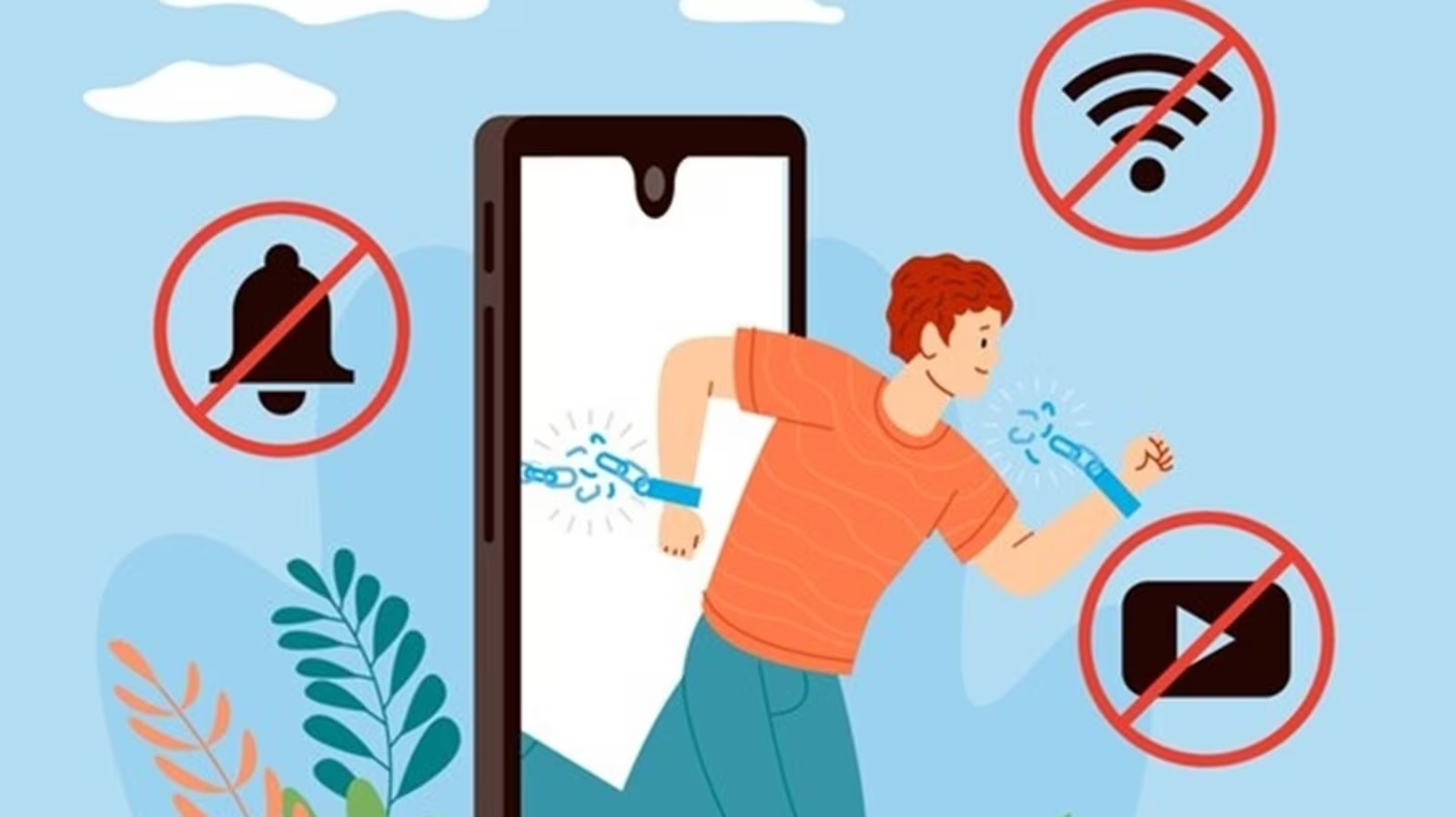Feeling overwhelmed by constant digital stimulation? A dopamine detox might be the solution you’re looking for. This practice helps reset your brain’s reward system, leading to improved focus and well-being.
A dopamine detox involves cutting out activities that trigger excessive dopamine release, such as social media, video games, and junk food. By following a structured plan, you can regain control over your habits and boost your productivity.
In this blog post, we’ll explore a simple 7-step process to master the dopamine detox. These steps are designed to be easy to follow and implement in your daily life. Get ready to transform your relationship with technology and rediscover the joy of simple pleasures.
Key Takeaways
- A dopamine detox can reset your brain’s reward system
- The 7-step plan helps you cut out excessive dopamine triggers
- Following the detox can lead to improved focus and well-being
Mastering the Foundations
Dopamine detox starts with grasping key concepts and principles. Learning about dopamine’s role and detox basics sets the stage for success.
Understanding Dopamine
Dopamine is a brain chemical linked to pleasure and reward. It plays a big part in motivation and focus. Our brains release dopamine when we do fun things or reach goals.
Too much dopamine can lead to addiction-like behaviors. This happens with things like social media, video games, or junk food. The brain gets used to high dopamine levels and craves more.
A dopamine detox aims to reset this system. It involves taking a break from high-stimulation activities. This can help bring dopamine levels back to normal.
Principles of Dopamine Detox
The main idea of a dopamine detox is to cut out things that give quick pleasure. This means avoiding social media, video games, and unhealthy foods for a set time.
The detox period can last from a few hours to several days. During this time, it’s best to focus on simple activities. Reading, walking, or talking with friends in person are good options.
It’s important to plan ahead for a detox. Pick a day when you have fewer commitments. Tell friends and family so they can support you. Remember, the goal is to reset your brain, not punish yourself.
Executing the 7-Step Dopamine Detox Plan
The dopamine detox plan helps reset your brain’s reward system. It involves identifying triggers, setting goals, and making lifestyle changes. Let’s explore each step in detail.
Step 1: Identifying Dopamine Triggers
Dopamine triggers are things that give quick pleasure. Common triggers include:
- Social media
- Video games
- Junk food
- Online shopping
- Binge-watching TV shows
People should make a list of their personal triggers. This helps them know what to avoid during the detox. It’s important to be honest about habits that may be harmful.
Some triggers might be harder to spot. Keeping a daily log can help uncover hidden patterns. This step is key for a successful detox.
Step 2: Establishing Clear Goals
Setting goals gives the detox purpose and direction. Goals should be:
- Specific
- Measurable
- Achievable
- Relevant
- Time-bound
Example goals:
- Reduce social media use to 30 minutes per day
- Replace video games with reading for 1 hour each evening
- Cook meals at home 5 days a week instead of ordering takeout
Writing down goals makes them more real. It’s helpful to put them somewhere visible as a daily reminder.
Step 3: Creating a Detox Schedule
A detox schedule sets the plan in motion. It should include:
- Start and end dates
- Daily routines
- Specific times for new activities
Here’s a sample schedule:
| Time | Activity |
|---|---|
| 7:00 AM | Wake up, meditate |
| 8:00 AM | Healthy breakfast |
| 9:00 AM – 5:00 PM | Work (no social media) |
| 6:00 PM | Exercise |
| 7:00 PM | Dinner with family |
| 8:00 PM | Reading or hobby |
| 10:00 PM | Bedtime routine |
The schedule should be realistic and allow for some flexibility. It’s okay to adjust it as needed.
Step 4: Eliminating Distractions
Removing distractions is decisive for a successful detox. This may include:
- Deleting social media apps
- Turning off notifications
- Putting devices in a different room
- Using website blockers
It’s also helpful to tell friends and family about the detox. They can offer support and avoid tempting you with triggering activities.
Creating a clutter-free environment can reduce stress and improve focus. This makes it easier to stick to the detox plan.
Step 5: Engaging in Productive Activities
Filling time with productive activities prevents boredom and builds new habits. Good options include:
- Reading books
- Learning a new skill
- Exercising
- Practicing mindfulness
- Spending time in nature
- Pursuing creative hobbies
It’s important to choose activities that align with personal interests and goals. This makes them more enjoyable and sustainable.
Trying new things can be exciting and rewarding. It helps create a sense of accomplishment and boosts self-esteem.

Step 6: Monitoring Progress
Tracking progress helps stay motivated and identify areas for improvement. Useful tools include:
- Daily journals
- Habit tracking apps
- Weekly check-ins with a friend or mentor
People should note how they feel each day. This can reveal positive changes in mood, energy, and focus.
It’s normal to face challenges during a detox. Keeping a record of obstacles and how they were overcome can be helpful for future reference.
Step 7: Sustaining the Detox
The final step is to make lasting changes. This involves:
- Reflecting on the detox experience
- Identifying which new habits to keep
- Creating a long-term plan for balanced dopamine levels
It’s okay to reintroduce some triggers in moderation. The key is to maintain control and awareness.
Regular “mini-detoxes” can help reinforce good habits. These might last a day or a weekend.
Remember, a dopamine detox is not about eliminating pleasure. It’s about finding healthier sources of reward and satisfaction.
Frequently Asked Questions
A dopamine detox can help reset your brain‘s reward system and improve focus. It may lead to better habits and increased productivity. Let’s explore some common questions about this practice.
What are the primary benefits of undergoing a dopamine detox?
A dopamine detox can boost mental clarity and focus. It often reduces anxiety and improves sleep quality. Many people report feeling more motivated and productive after a detox.
The detox can also help break unhealthy habits. It may lead to better impulse control and decision-making skills.
How can one begin a dopamine detox in a safe and effective manner?
Start by picking a specific day for the detox. Remove all sources of quick dopamine hits, like social media and junk food. Replace these with low-stimulation activities such as reading or walking.
Stay hydrated and eat healthy meals during the detox. It’s important to inform friends and family about your plan to avoid interruptions.
What are the common challenges faced during a dopamine detox, and how can they be overcome?
Boredom and restlessness are common challenges. Combat these by planning engaging but low-stimulation activities. Meditation or deep breathing exercises can help manage cravings.
Some people may experience irritability or mood swings. Remind yourself of the benefits and stay committed to the process.
How can lifestyle modifications aid in the process of a dopamine detox?
Regular exercise can boost natural dopamine levels. A healthy diet rich in protein can support dopamine production. Getting enough sleep is decisive for maintaining balanced brain chemistry.
Reducing screen time and setting boundaries with technology can make the detox more effective. Spending time in nature can also help reset the reward system.
What duration is recommended for a successful dopamine detox experience?
A typical dopamine detox lasts 24 hours. Some people extend it to a weekend or even a full week. The ideal duration varies based on individual goals and lifestyle.
Start with shorter periods and gradually increase the length. This approach helps build tolerance and makes the process more manageable.
Can a dopamine detox contribute to long-term behavioral changes, and if so, how?
Regular dopamine detoxes can lead to lasting changes in habits and behavior. They help create awareness of unhealthy patterns and triggers. This awareness is key to making long-term changes.
The detox experience often sparks a desire for a more balanced lifestyle. It can inspire new habits like mindfulness or pursuing meaningful hobbies.




